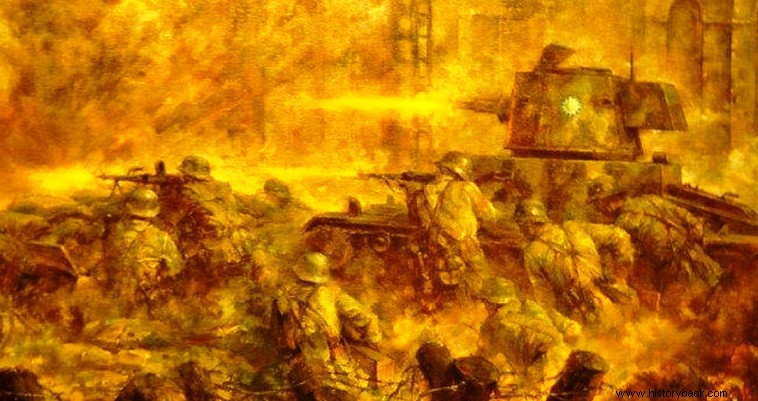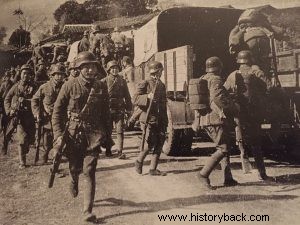
The battle of the Kunlun Pass was one of the most important of the Sino-Japanese war on the eve of World War II. It has a special significance as the Chinese threw about 400 tanks into the battle.
The strategically important pass is the key to Guanxi province on the current China-Vietnam border. The aim of the Japanese was to cut off the Chinese supply route through what was then French Indochina. For this purpose they had advanced and occupied the pass which the Chinese wanted to recapture at any cost.
The Japanese had thrown forces from land, sea and air into the battle. The spearhead was the elite 5th Infantry Division (MP) which was reinforced with other forces . In total the Japanese threw into battle 45,000 men who were supported by two aircraft carriers and many more warships.
On the Chinese side, the reinforced 5th Army Corps (SS) took part in the battle with 60,000 men as well as 270 Soviet light tanks (240 T-26, 30 BT-5) and 120 Italian CV-33 tankettes. The 5th SS under General Du Yuming, had the 200th and the New 22nd MP and the 1st "Honorable" Division.
The Chinese attack took place with two divisions in the first echelon (200th and 1st "Honorable"), while the New 22nd MP was maneuvered in order to cut off the Japanese line of communication. The Japanese were taken by surprise. The commander of the 5th MP, Lt. Gen. Nakamura, fell fighting trying to avoid being surrounded by the Chinese New 22nd MP.
Closely supported by air, the Japanese launched a counterattack with the elite 21st Infantry Brigade (IBR) known as "the Invincible Sword". Nevertheless, the Japanese, although inflicting heavy losses on the Chinese, were forced to retreat to avoid being encircled. After all, they too had suffered heavy losses, especially in officers, of the order of 85% in the front-line units, with the Chinese tanks playing a key role in the course of the battle.
In total the Japanese suffered at least 8,000 casualties. The Chinese losses were even heavier, mainly due to the action of the enemy air force, and reached 6,400 dead and missing and 11,000 wounded. However, the battle was a particularly stimulating success for Chinese morale, the first since 1938.

Chinese soldiers.
